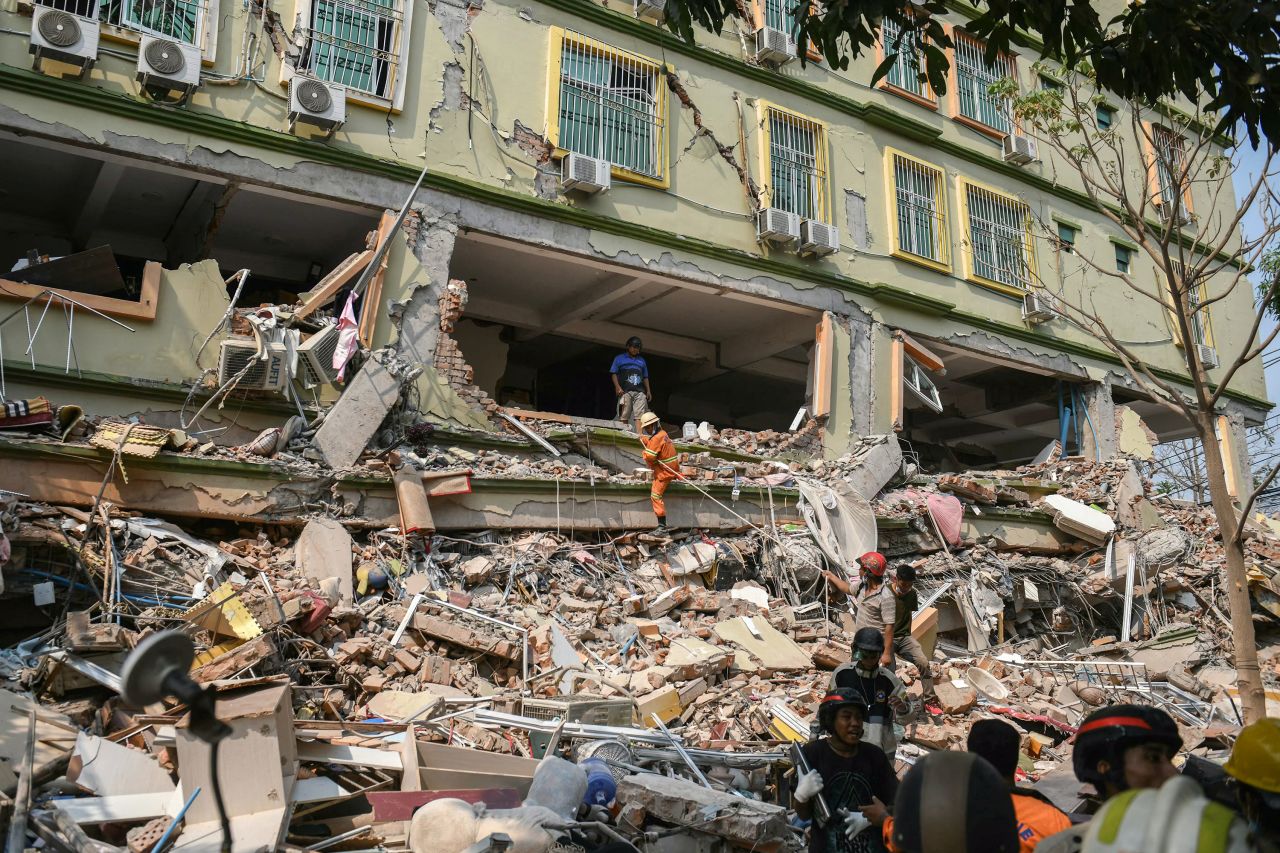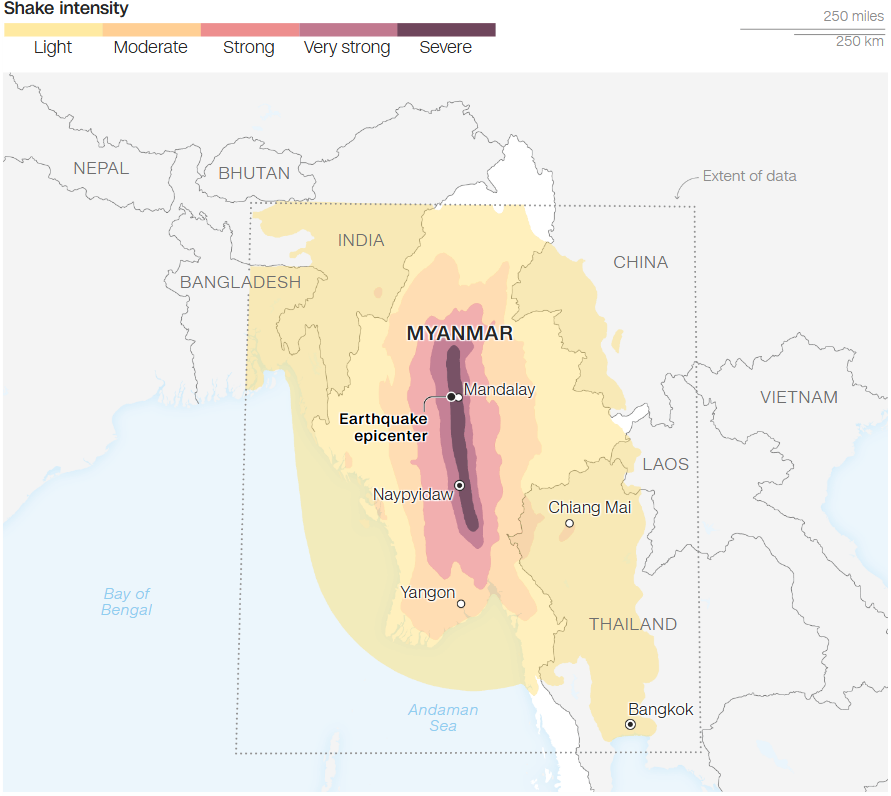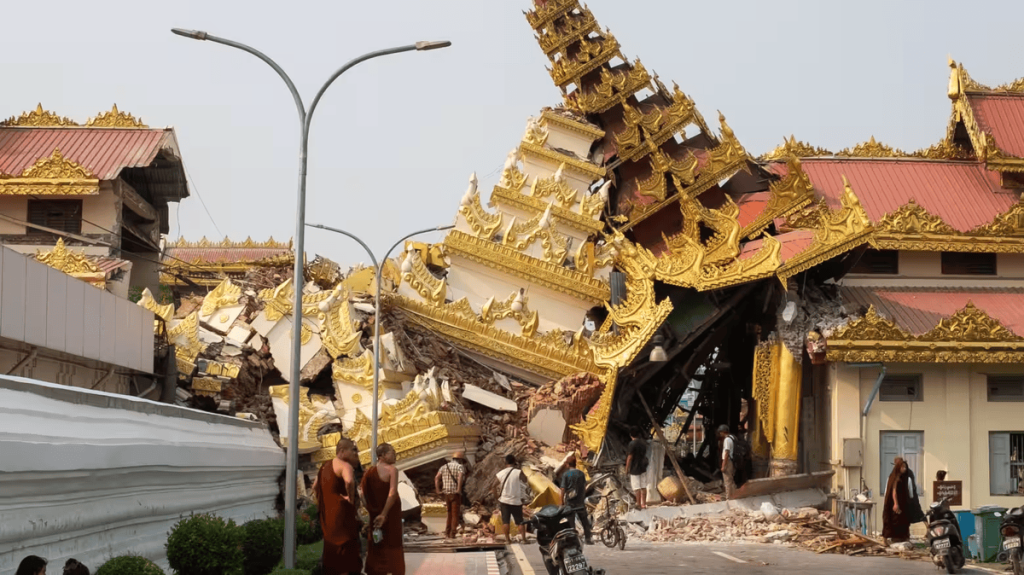A massive 7.7-magnitude earthquake has devastated central Myanmar, with the official death toll in Myanmar now exceeding 1,000. Occurring on March 28, 2025, near Mandalay—the country’s ancient royal capital and second-largest city—the quake is being hailed as the biggest earthquake ever to hit Myanmar in more than a century.
Death Toll in Myanmar Climb in a War-Torn Nation

The quake struck at approximately 12:50 p.m. local time, originating from the Sagaing Fault at a shallow depth of just 10 km. This shallow focus dramatically increased the quake’s destructiveness. Residents across Mandalay and surrounding regions witnessed widespread structural collapses; historical buildings, including parts of Mandalay Palace and centuries-old pagodas, crumbled under the force of the shaking.
Eyewitnesses described harrowing scenes: survivors in Mandalay were seen desperately removing rubble by hand, with many trapped beneath collapsed walls. “There were calls for help everywhere, but we lacked the heavy machinery to clear the debris,” said one local resident. The fragile infrastructure, already weakened by years of civil conflict, has left Myanmar extremely vulnerable. Authorities now fear that the death toll in Myanmar could climb dramatically, with the U.S. Geological Survey projecting that fatalities might eventually exceed 10,000.
Myanmar Earthquake Map Reveals the Epicenter

The official Myanmar earthquake map released by the USGS pinpoints the epicenter just 17 km from Mandalay. The map clearly outlines the extent of the seismic activity along the Sagaing Fault—a major tectonic boundary that separates the Indian and Sunda plates. This fault has a long history of generating powerful strike-slip earthquakes, where the Earth’s crust moves horizontally as tension is released. Experts have noted that the quake occurred in a “seismic gap” where strain had built up over decades, making the event both unpredictable and catastrophic.
International Rescue Efforts and Aid Mobilisation
In the immediate aftermath, rescue teams from within Myanmar have been working tirelessly amid chaotic conditions. However, efforts have been severely hampered by damaged roads, widespread communication outages, and a critical shortage of heavy machinery. In a rare move, Myanmar’s military junta—long criticized for its isolationist policies—has issued an open plea for international assistance.
Foreign aid has already begun to trickle into the region. A Chinese disaster relief team was among the first to arrive, while teams from India, Russia, and several Southeast Asian nations are on standby. The United Nations has activated its emergency protocols and pledged millions of dollars in aid. Even President Trump confirmed at the White House that the U.S. would help, despite longstanding tensions with the Myanmar regime.
Impact Beyond Myanmar
The earthquake’s far-reaching effects were felt well beyond Myanmar’s borders. In Thailand, the tremors reached as far as Bangkok—a city not typically prone to such seismic activity. The shaking was so intense that a 33-story skyscraper under construction in Bangkok collapsed, resulting in multiple fatalities and trapping dozens of workers under the debris. Emergency crews in Thailand are working round the clock to rescue survivors, with at least 10 reported deaths in the capital so far.
Neighboring countries including China, Laos, and even parts of Bangladesh registered noticeable tremors. In China’s Yunnan province, buildings in the border town of Ruili sustained damage and minor injuries were reported. This transboundary impact underscores the sheer scale of the disaster.
Science Behind the Catastrophe
Experts point to the unique geological features of the region as a major factor in the quake’s severity. The Sagaing Fault is notorious for its strike-slip movements, and the shallow depth of the rupture allowed a concentrated burst of energy to reach the surface almost instantaneously. Dr. Richard Luckett from the British Geological Survey explained, “The combination of a powerful magnitude, shallow depth, and densely populated areas creates a perfect storm for destruction. Unfortunately, Myanmar’s building codes and infrastructure have not kept pace with these seismic risks.”


